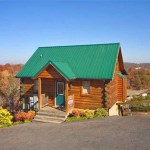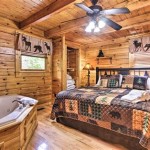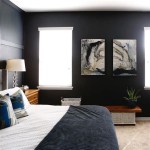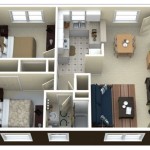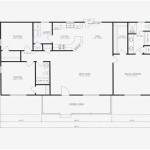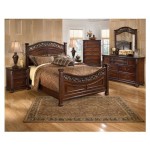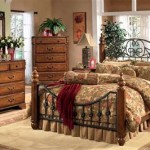Wooden Panels for Bedroom Walls: Enhancing Aesthetics and Functionality
Wooden panels, utilized for bedroom wall decoration, have become increasingly popular for their ability to introduce texture, warmth, and a touch of natural elegance to interior spaces. These panels are available in a diverse range of materials, styles, and finishes, offering homeowners considerable flexibility in achieving their desired aesthetic. Beyond mere decoration, wooden panels can also contribute to improved acoustic properties and insulation within a bedroom environment.
The application of wooden panels on bedroom walls represents a significant design choice with a lasting impact on the overall ambiance. A careful consideration of material selection, installation techniques, and the overall design scheme is essential to ensure that the wooden panels complement the existing décor and fulfill the intended purpose, be it aesthetic enhancement, acoustic dampening, or thermal insulation.
Material Selection: A Foundation for Durability and Visual Appeal
The choice of wood material is a crucial element in the selection of wooden panels for bedroom walls. Different types of wood possess distinct characteristics, influencing not only the visual appeal but also the durability, maintenance requirements, and overall cost of the installation. The most common wood types used for paneling include hardwood, softwood, and engineered wood products.
Hardwood options, such as oak, maple, and walnut, are prized for their durability, rich grain patterns, and natural resistance to wear and tear. Oak, known for its strength and distinctive grain, provides a classic and timeless aesthetic. Maple, with its light color and smooth texture, offers a more contemporary and understated look. Walnut, distinguished by its dark, luxurious tones, creates a sophisticated and elegant ambiance. These hardwoods, while aesthetically appealing and durable, are typically more expensive than softwood options.
Softwood species, including pine, cedar, and fir, offer a more cost-effective alternative to hardwoods. Pine, readily available and relatively inexpensive, is a popular choice for its versatility and ease of staining or painting. Cedar, known for its aromatic properties and natural resistance to insects and decay, is particularly suitable for bedrooms prone to moisture or humidity. Fir, with its straight grain and uniform texture, provides a clean and modern appearance. While softwoods are generally less durable than hardwoods, they can still provide adequate performance for bedroom wall paneling, particularly when properly treated and finished.
Engineered wood products, such as plywood and MDF (medium-density fiberboard), offer a stable and consistent alternative to solid wood. Plywood, constructed from multiple layers of wood veneer glued together, provides excellent dimensional stability and resistance to warping. MDF, made from wood fibers compressed with resin, offers a smooth and uniform surface ideal for painting or laminating. Engineered wood products are typically more affordable than solid wood and can be manufactured to mimic the appearance of various wood species. These materials, however, may lack the natural grain and character of solid wood.
Beyond the type of wood, the method of processing also plays a crucial role. Solid wood panels are typically more expensive and require more careful handling due to their susceptibility to expansion and contraction with changes in temperature and humidity. Veneered panels, where a thin layer of real wood is applied to a substrate, offer a more stable and cost-effective alternative. Laminate panels, which feature a photographic image of wood applied to a substrate, provide a durable and affordable option, although they may lack the tactile feel and aesthetic depth of real wood.
Style and Design: Integrating Panels into the Bedroom's Decor
The style and design of wooden panels must complement the overall aesthetic of the bedroom. Considerations include the panel's size, shape, orientation, texture, and finish. The chosen style should enhance the existing decor and create a cohesive and visually appealing space.
The size and shape of the panels can significantly impact the visual perception of the room. Large panels can create a sense of spaciousness and grandeur, while smaller panels can add texture and visual interest. Vertical panels can visually elongate the walls, making the room appear taller, while horizontal panels can create a sense of width and expansiveness. Square or rectangular panels offer a classic and versatile option, while more intricate or geometric shapes can add a contemporary or artistic flair.
The orientation of the panels can also influence the overall aesthetic. Horizontal panels tend to create a more relaxed and grounding feel, while vertical panels create a sense of formality and height. Diagonal panels can add a dynamic and energetic touch, but they may be more visually demanding and require careful placement. The choice of orientation should be guided by the room's dimensions, the desired ambiance, and the existing architectural features.
The texture of the wooden panels introduces an additional layer of visual and tactile interest. Smooth panels offer a clean and modern look, while textured panels, such as those with raised grain or carved details, create a more rustic or traditional feel. Reclaimed wood panels, with their weathered surfaces and imperfections, can add character and authenticity to the space. The choice of texture should complement the overall design scheme and enhance the desired ambiance.
The finish of the wooden panels is another crucial consideration. A natural finish, which highlights the wood's inherent color and grain, can create a warm and inviting atmosphere. Staining can enhance the wood's natural beauty and provide a wider range of color options. Painting allows for greater flexibility in matching the panels to the existing decor and creating a contemporary or minimalist look. The choice of finish should complement the overall design scheme and enhance the desired aesthetic.
Installation and Maintenance: Ensuring Longevity and Performance
Proper installation is critical to the longevity and performance of wooden panels. The installation process varies depending on the type of panel, the condition of the wall, and the desired aesthetic. A professional installation is generally recommended to ensure a secure and aesthetically pleasing result.
Preparing the wall surface is a crucial first step. The wall should be clean, dry, and free of any loose paint or debris. Uneven surfaces should be leveled to ensure that the panels are installed flush and securely. Depending on the wall material, it may be necessary to install furring strips to provide a secure attachment point for the panels. Furring strips are typically made of wood or metal and are attached to the wall at regular intervals.
The panels can be attached to the wall using a variety of methods, including adhesive, nails, screws, or a combination of these. Adhesive is a popular option for lightweight panels and smooth surfaces. Nails and screws provide a more secure attachment for heavier panels or uneven surfaces. When using nails or screws, it is important to countersink the fasteners and fill the holes with wood filler to create a smooth and seamless finish.
Proper maintenance is essential to preserve the beauty and integrity of the wooden panels. Regular cleaning with a soft cloth or vacuum cleaner will help to remove dust and dirt. Avoid using harsh chemicals or abrasive cleaners, as these can damage the finish. For solid wood panels, it is important to maintain a stable humidity level to prevent warping or cracking. Applying a sealant or varnish can protect the panels from moisture and stains.
Addressing potential issues proactively can prevent more significant problems down the line. Inspect the panels periodically for signs of damage, such as cracks, chips, or water stains. Repair any damage promptly to prevent further deterioration. If the panels are exposed to direct sunlight, consider using window coverings to reduce fading. Consider the acoustic properties of the chosen backing if sound dampening is desired. In this case, a sound-dampening material might be placed behind the wooden panels.
The choice of wooden panels, their style, and the installation method significantly impact the bedroom's final appearance and functionality. Careful planning and execution are necessary to achieve the desired results and ensure the long-term enjoyment of this design feature.

Wooden Wall Panel Set Wide Size 50mm Oak Slab Decor Apartment Wood Slats Design Etsy

Wood Panel Accent Wall Primary Bedroom Home With Emily Jean

Personalized Custom Made Wooden Wall Panels Decor 3d Art Easy To Install Etsy

3d Wood Wall Panels 4 Piece Set

Quadri Wood Mosaic Wall Panel

Mocha Brown Slat Wood Panels For Walls Sleek 106 X 5 3 4

Woody Walls Acoustic Wood Panels Set Of 2 Slat Wall Oslo

Champagne Oak Slat Wood Panels For Walls Sleek 106 X 5 3 4

Wall Paneling The Stylish Solution For A Modern Home In 2024

20 Wood Wall Paneling Ideas For Your Home 2024
See Also

